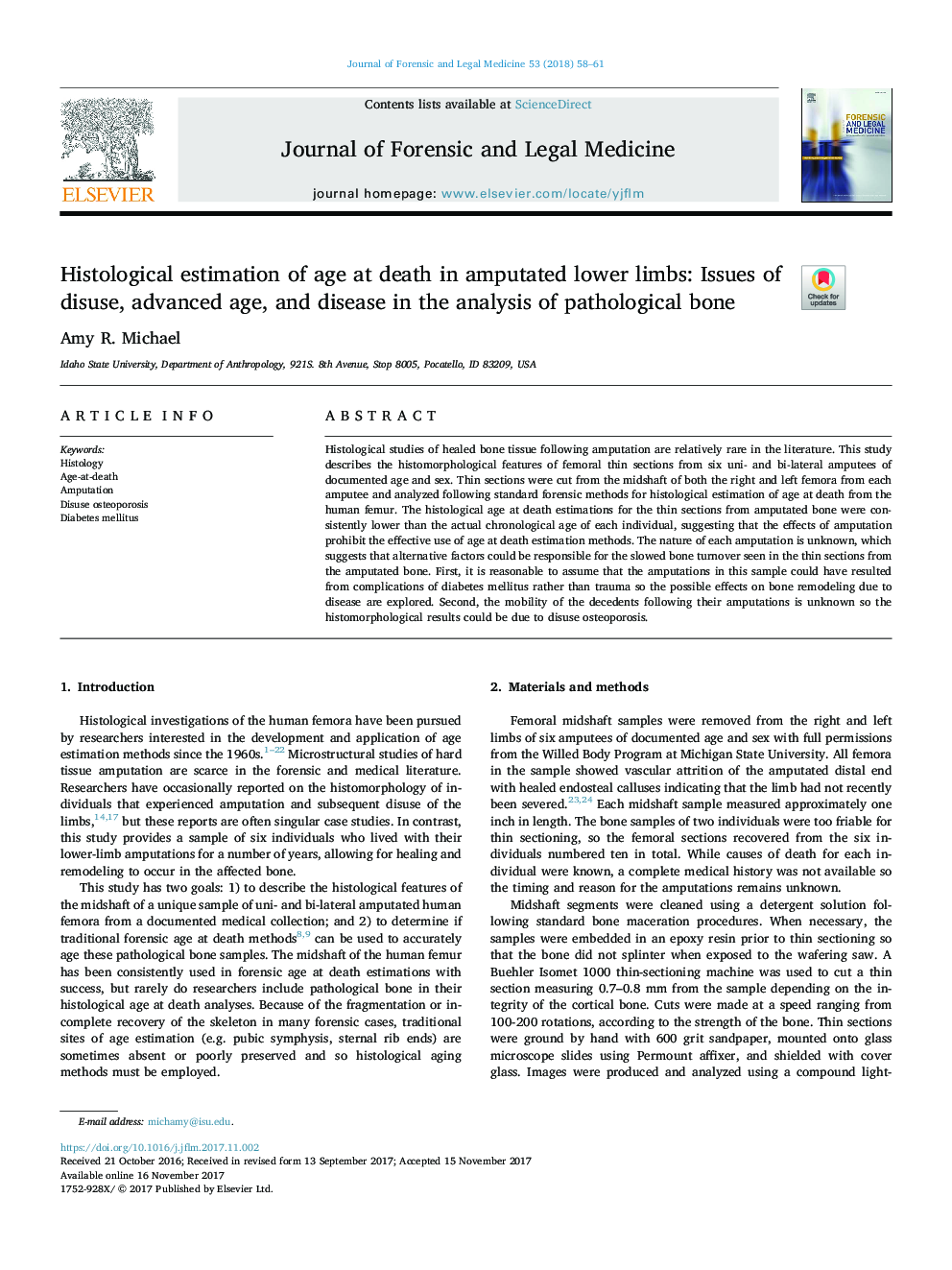| Article ID | Journal | Published Year | Pages | File Type |
|---|---|---|---|---|
| 6555102 | Journal of Forensic and Legal Medicine | 2018 | 4 Pages |
Abstract
Histological studies of healed bone tissue following amputation are relatively rare in the literature. This study describes the histomorphological features of femoral thin sections from six uni- and bi-lateral amputees of documented age and sex. Thin sections were cut from the midshaft of both the right and left femora from each amputee and analyzed following standard forensic methods for histological estimation of age at death from the human femur. The histological age at death estimations for the thin sections from amputated bone were consistently lower than the actual chronological age of each individual, suggesting that the effects of amputation prohibit the effective use of age at death estimation methods. The nature of each amputation is unknown, which suggests that alternative factors could be responsible for the slowed bone turnover seen in the thin sections from the amputated bone. First, it is reasonable to assume that the amputations in this sample could have resulted from complications of diabetes mellitus rather than trauma so the possible effects on bone remodeling due to disease are explored. Second, the mobility of the decedents following their amputations is unknown so the histomorphological results could be due to disuse osteoporosis.
Related Topics
Life Sciences
Biochemistry, Genetics and Molecular Biology
Genetics
Authors
Amy R. Michael,
